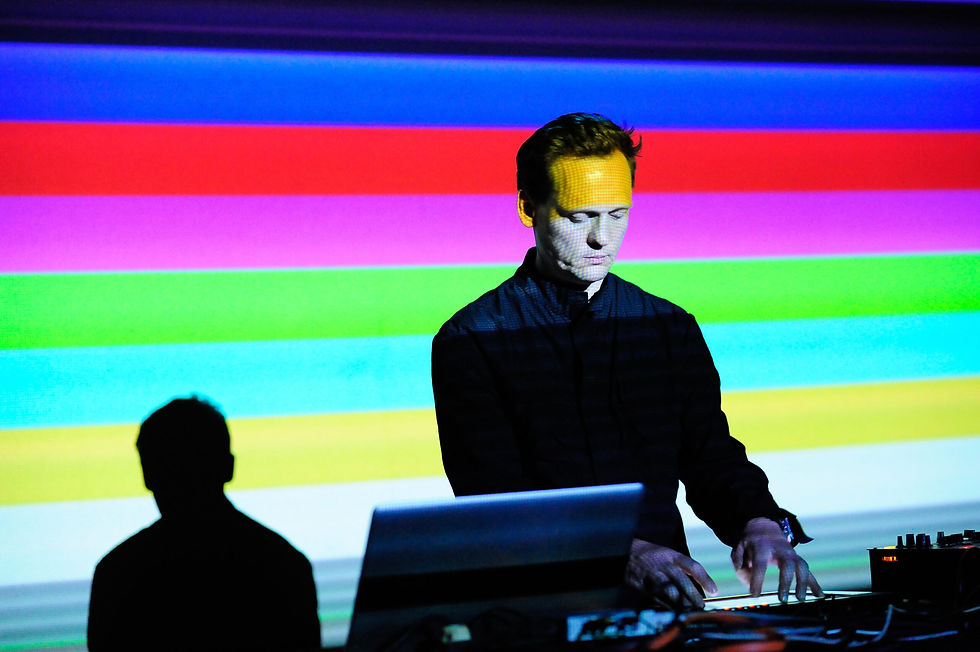Add paragraph text. Click “Edit Text” to update the font, size and more. To change and reuse text themes, go to Site Styles.

Add paragraph text. Click “Edit Text” to update the font, size and more. To change and reuse text themes, go to Site Styles.
Add paragraph text. Click “Edit Text” to update the font, size and more. To change and reuse text themes, go to Site Styles.
Add paragraph text. Click “Edit Text” to update the font, size and more. To change and reuse text themes, go to Site Styles.
Futuro Antico. Interview with Carsten Nicolai
4 ott 2023
Marco Bassan
A new album, a solo exhibition currently underway, and three ideas for the future, including the rediscovery of human relationships in an increasingly complex world that needs new ideas to face wars, tensions, and social imbalances. The interview for the "Futuro Antico" series.

What are your inspirational references in art?
I draw most of my inspiration from nature. My interest lies less in art as a direct reference for my work and more in the philosophical and scientific questions related to the natural world. I’m fascinated by understanding the world around us, its composition, and how, as a creative individual, I fit into this system. It’s a broad answer, but given the scope of the question, I’d like to keep it that way.
What project represents you the most? Can you tell us about its origins?
One of the more recent projects in which I feel truly represented is Transmitter Receiver: The Machine and The Gardener. It’s an immersive space made up of various elements central to my artistic practice. I would describe it more as an atmospheric experience rather than a traditional art installation.
Can you explain that further?
This atmosphere is created through multiple sensory elements, including architecture, space, proportions, materials, sound, and light. The primary inspiration for this installation is radioactivity and radioactive particles. It’s in a constant state of change, influenced by space particles and the sounds they produce. The installation includes detectors and antennas that capture noises from deep space, making them integral parts of the artwork. Moreover, this installation has a universal perspective that transcends the boundaries of an art space, connecting us to our place in the solar system and beyond. It’s the culmination of various elements I’ve worked on for years, encompassing not only visual and sculptural aspects but also performance and sound. It’s a complex piece that unifies many facets of my work as both a visual artist and a sound artist.

How important is Genius Loci in your work?
I don’t often use the term “genius loci”; I find that terminology somewhat problematic. I align more with Joseph Beuys, who believed that every human being is an artist. The concept of "genius" doesn’t resonate with me, so it’s difficult for me to address this question directly.
How important is the past for imagining and building the future?
The beauty of the future lies in its unpredictability, at least beyond the short term. While we can statistically predict certain aspects, we can only build the future based on our past experiences. In this sense, the ancient past will always be part of our future. Humanity’s history is relatively short compared to the history of the universe, so fundamental philosophical questions persist in various forms. One of my favorite ancient stories is The Odyssey, which highlights the importance of the journey itself rather than the destination. We are constant travelers, making decisions without knowing where we will end up. The journey, the learning process, and the experiences we have hold greater significance than we often realize.
What advice would you give to a young person wanting to follow in your footsteps?
I would suggest patience, curiosity, and stability. Curiosity has been a driving force in my artistic life, and staying open to learning is essential. It’s not only inspiring but also motivating. Stability, in this context, means staying true to your vision and understanding that artistic efforts are more like marathons than sprints. Many ideas take time to grow and be recognized, so don’t expect immediate success. But most importantly, believe in your vision and in what you are doing.

In an era defined as "post-truth," does the concept of the sacred still have importance and strength?
In my world, which I navigate through my work, discussions about truth, lies, facts, and conspiracy theories are indeed challenging. It’s essential to base our knowledge on reliable information and our own personal experiences rather than relying solely on secondary sources. Strength is crucial in these times, as we must navigate a world full of complexity.
How do you imagine the future? Could you give us three ideas that you think will shape the coming years?
Three significant ideas come to mind for the future. First, I would call it "para-physics," an unconventional term. It involves viewing processes as interconnected rather than separate. In our increasingly specialized world, understanding the intertwined interactions between different fields of knowledge will shape our future. Second, the social and cultural aspects of society are becoming more important. In an era marked by war and discrimination, we need to explore new ideas about how societies can be structured for the future. Lastly, real social interactions and spaces for social engagement need more attention. It’s not just about online social networks, which can be dysfunctional. We need to rediscover the importance of real human interactions in our lives.